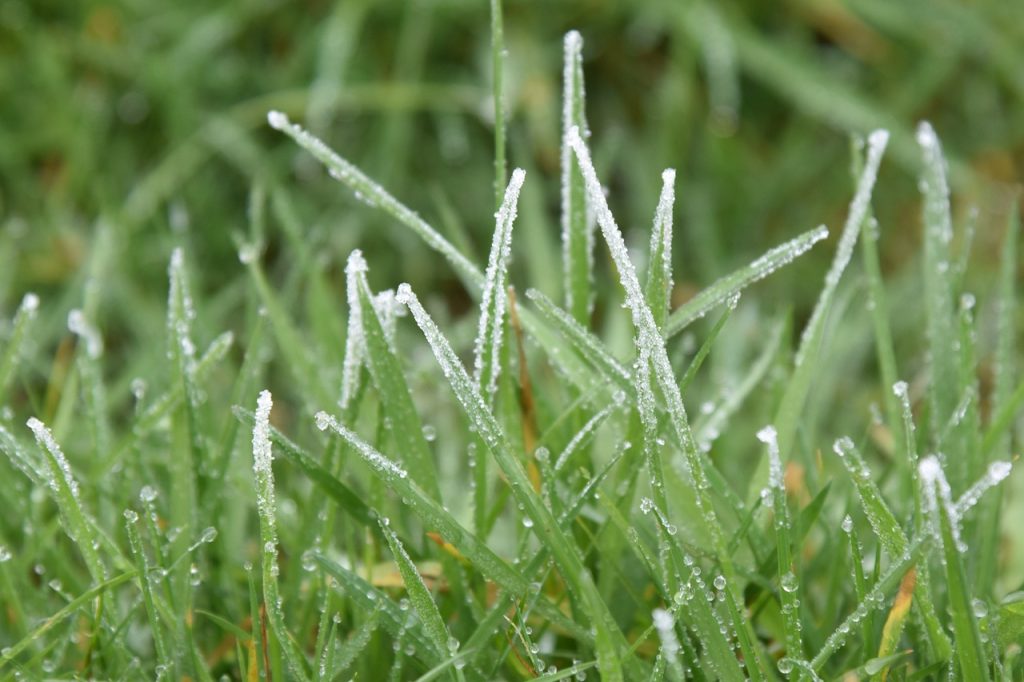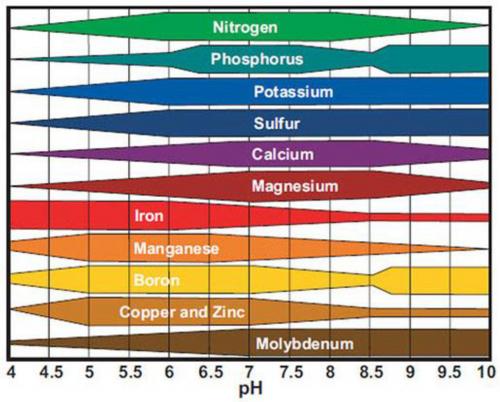As the seasons change and winter is knocking on our doors, it’s essential to give your lawn some TLC so it can survive the cold and emerge healthy and vigorous in the spring. It’s important to winterize your lawn now, so once the snow thaws, you have little to do besides look out your window and see lush, green grass.

Today, we’re talking about how to winterize your grass to stay healthy and strong, even through the harshest winter mother nature can throw at us. We’ve got you covered with all things related to fall fertilizer and liming, with tips and tricks for a winter-hardy lawn.
Your Lawn Needs Fall Fertilizer
We get it. It seems rather pointless to feed your grass right before winter when it will go dormant and not grow. Surprisingly, though, this is the most crucial time of the growing season to get fertilizer down. Well, if you’re growing a cool-season grass like Kentucky bluegrass, perennial rye, or fine fescue.
Why is fall fertilizing so beneficial?
Your grass took a beating over the summer. Cool-season turfs aren’t especially fond of high summer temperatures, so they need time to recover from the heat. These grass types take in many nutrients right now to repair cellular damage.

Plus, it’s gearing up and preparing for the upcoming snow and cold. Your grass stores nutrients and carbohydrates in special storage vacuoles to help break dormancy come spring.
It’s thought that almost three-quarters of its yearly uptake occurs in autumn, just before the grass goes dormant.
Hence, it’s important to winterize your lawn, and now is the prime time to get a fertilizer application down.
What roles does fall fertilizer play?
The nitrogen, potassium, and phosphorus in your winterizer fertilizer have some big shoes to fill.
- Nitrogen (N) spurs leaf blade development and improves turf density. Thicker, wider blades (and more) result in better reserve storage, and your grass will green up better in the spring.
- Potassium (K) helps the grass tolerate stresses like cold weather, wind, and dry climates better—it’s like you’re boosting its immune system.
- Phosphorus (P) promotes root growth and helps the grass move energy reserves into the roots for winter storage.
What kind of fertilizer should you apply in the fall?
First off, avoid using a spring fertilizer for this application. You want a product formulated towards a fall application so your grass has nutrients throughout the winter.
Look for a high-nitrogen blend (25-5-5, 30-0-4) or choose a balanced formula like a 12-12-12. Ideally, you want a product with a slow-release nitrogen instead of a quick-release formulation. The slow-release N becomes available a little at a time, so your grass has food all winter.
How much fall fertilizer should I apply?
There are two different ways to approach fertilizer amounts. The easy way is to apply the recommended rate on the product packing. However, the best way to do it is to have your soil sampled every 2 or 3 years to determine the nutrient content. When you know what your soil holds, you can fine-tune fertilizer rates to give your grass exactly what it needs without over-applying.
Pro tip: If you need help with soil testing, contact your local agricultural extension office. They’ll explain how to take a representative sample and tell you where to send it for testing.
Your Lawn May Need Soil Amendments Like Lime
Fall is also an excellent time to apply lime to your lawn if your soil pH needs adjusting.
Why is soil pH important?
The nutrient availability of your soil is highly influenced by its pH. When the pH is too far out of range or too far from neutral, it affects how much of a specific nutrient is available for plant uptake through the roots. It’s kind of tricky, though, because different nutrients become unavailable at different pH values, and some become so available they become toxic.
Generally speaking, at the high and low ends of the pH scale, macronutrients like nitrogen, phosphorus, potassium, calcium, and magnesium become unavailable, and you’ll see deficiency symptoms. At the ends of the scale, the micronutrients (iron, boron, manganese, zinc, copper, and a few others) become highly available and can cause toxicities.

What is the ideal soil pH for growing grass?
For most lawns, the ideal soil pH is between 5.8 and 7.0, which is considered slightly acidic to neutral. Cool-season grasses like the pH in the upper end of that range, a touch closer to neutral than warm-season turfs.
What kind of lime should I apply to my lawn?
There are many different types of lime products available, and choosing one can sometimes feel overwhelming. Typically, you’ll see limestone derived from calcitic or dolomitic lime.
Calcitic lime is preferred as you’ll see added benefits from the calcium. Choose from agricultural ground limestone, pelletized limestone, or pulverized limestone. Pelletized is the easiest to apply, but it will take longer to change the soil pH.
How much lime should I apply?
A soil test is even more helpful for lime applications than fertilizer rates. You can have the soil pH analyzed, and the results will tell you how many pounds of pure calcium carbonate you should apply.
Keep in mind, though, that liming materials you can buy in the store are not pure calcium carbonate. You’ll need to look for the term “calcium carbonate equivalent” on the label, which varies depending on the material, and make a calculated adjustment.
Can You Apply Lime And Fertilizer At The Same Time When You Winterize Your Lawn?
While you can technically apply both at the same time, you shouldn’t. It’s best to test the soil pH, and if it needs adjusting, apply lime first. That way, you can get the soil pH into the proper range.
Then, when you apply your fertilizers, the nutrients will be available for plant uptake instead of just sitting in the soil and potentially leaching out of the root zone into groundwater sources.
Need Help Winterizing Your Lawn?
Running out of time before the snow flies? Don’t worry, we can help!
855-RILAWNS offers a 100% organic fertilizer program to help keep your lawn strong and lush while being environmentally conscious.
If you want to hire us for fall winterizing services, contact us here to get a quote or connect with us through our Facebook page.

